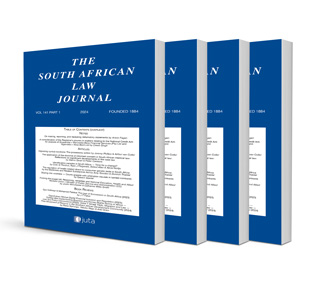Covering bonds, the accessorial principle and remedies founded in equity – Not self-evident bedfellows

Covering bonds, the accessorial principle and remedies founded in equity – Not self-evident bedfellows
Authors J C Sonnekus, E C Schlemmer
ISSN: 1996-2177
Affiliations: Professor, Department of Private Law, University of Johannesburg; Professor, School of Law, University of the Witwatersrand
Source: South African Law Journal, Volume 132 Issue 2, 2015, p. 340 – 371
Abstract
Covering bonds provide security for the fulfilment of future obligations, provided explicit reference is made to the intention to secure a future debt up to a maximum amount. The accessorial principle, in terms of which the vesting of the right of real security is dependent on the existence of a principal debt, also entails the automatic demise of the security right if no debt any longer exists. Acovering mortgage bond ostensibly registered on the mistaken belief that the underlying loan agreement is valid, is ab initio void because it lacks the necessary accessory nexus. The perceived registered bond in reality never existed and the Deeds Registries must be corrected by cancelling the meaningless registration. Even if the creditor afterwards acquires another claim, it does not ex post ratify the void bond. A potential enrichment claim that may follow as a result of the advance of funds founded on an invalid loan agreement (presuming enrichment sine causa can be proven and no blame attaches to the conduct of the claimant condemned under the clean-hands principle) cannot be secured by a non-existing bond ostensibly registered as a ‘covering bond’ for the void loan. There was no consensus to secure this conditional debt founded on the condictio indebiti, and no real agreement as required for the abstract system existed. No judgment convinces merely because it ostensibly provides an equitable remedy to retrieve taxpayers’ money that was incompetently squandered.